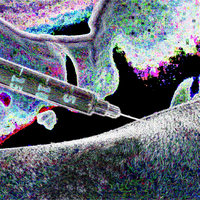| Sibutramine | |
|---|---|
| Molecular structure via molpic based on CDK |
| Conformer [] | |
|---|---|
| Conformer structure via JSmol | |
| Physical properties [] | |
|---|---|
| Molecular mass | 279.8 g/mol [1] |
| Melting point | 191-192 °C [1] |
| Decomposition | When heated to decomposition, material emits very toxic fumes of /hydrogen chloride/ and /nitrogen oxides/. Emits toxic fumes [1] |
| Solubility | 9.40e-04 g/L [1] |
| Predicted LogP | 5.4 [1] |
| Structural Identifiers [] | |
|---|---|
| Molecular formula | C17H26ClN [1] |
| IUPAC name | 1-[1-(4-chlorophenyl)cyclobutyl]-N,N,3-trimethylbutan-1-amine [1] |
| SMILES | CC(C)CC(C1(CCC1)C2=CC=C(C=C2)Cl)N(C)C [1] |
| InChI | InChI=1S/C17H26ClN/c1-13(2)12-16(19(3)4)17(10-5-11-17)14-6-8-15(18)9-7-14/h6-9,13,16H,5,10-12H2,1-4H3 [1] |
| InChIKey | UNAANXDKBXWMLN-UHFFFAOYSA-N [1] |
| Dosing [] | |
|---|---|
| Elimination half-life | 1 hour (sibutramine), 14 hours (M1) & 16 hours (M2) |
Sibutramine
Sibutramine (also known as Medaria, Butramin, Sibutramina, (+/-)-Sibutramine, racemic sibutramine, Cf-alli, Sibutraminum, Smr000238156, S-Sibutramine or BTS 54 524) is a stimulant substance of the amphetamine class.
Chemistry
Salts []
Stereochemistry []
(RS)-Sibutramine is a racemic mixture of the optical stereoisomers
Legal status
- Brazil: Sibutramine is a B2 substance.
- United States: Sibutramine is a Schedule IV substance.
 Anodyne
Anodyne